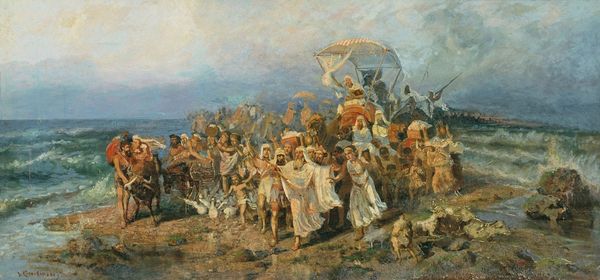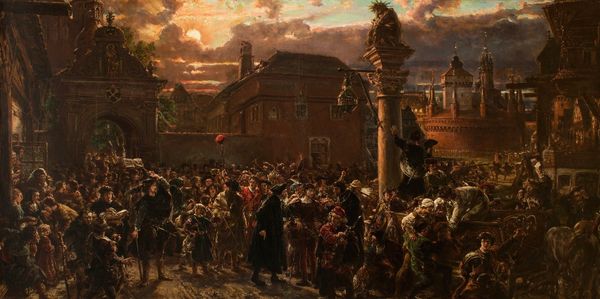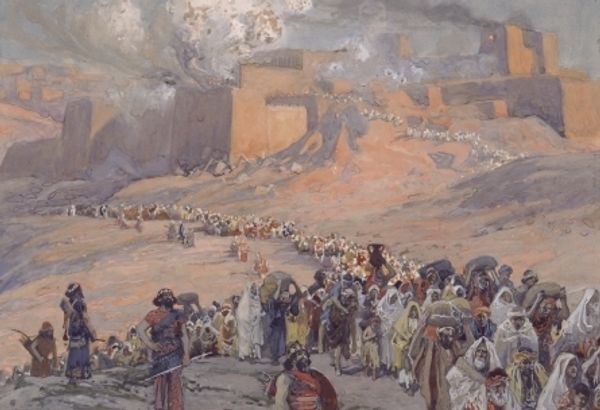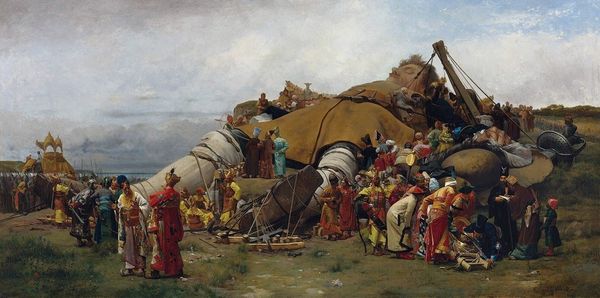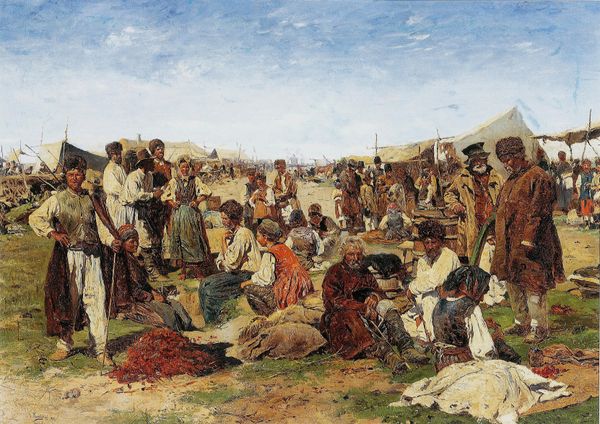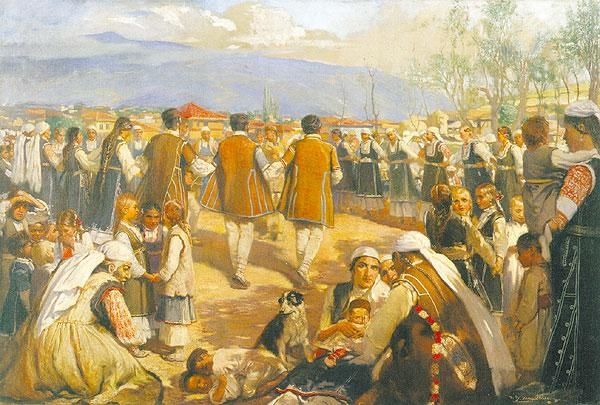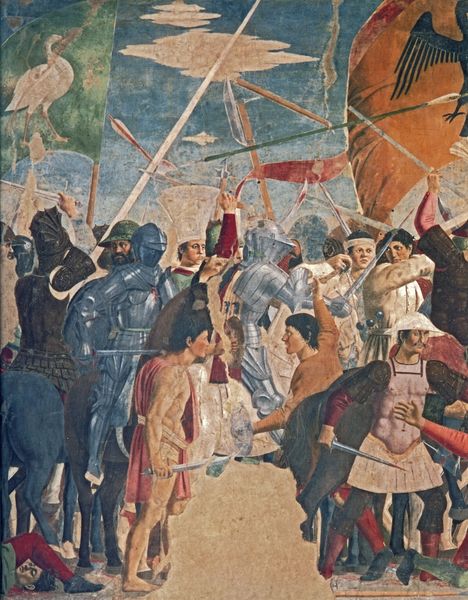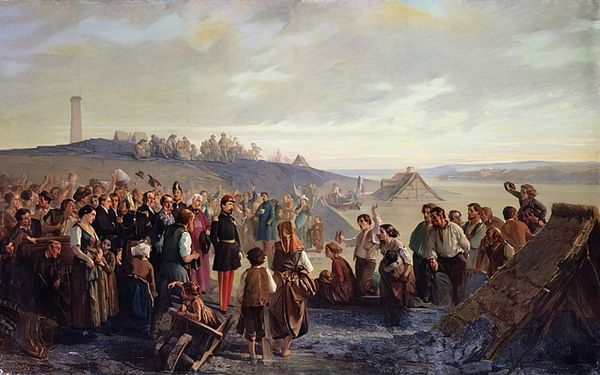
painting, oil-paint
#
portrait
#
medieval
#
narrative-art
#
painting
#
oil-paint
#
figuration
#
oil painting
#
jesus-christ
#
christianity
#
painting painterly
#
history-painting
#
academic-art
#
realism
Copyright: Public domain
Curator: Kramskoy's "Laughter (Hail, King of Judah)," painted in 1882, presents us with a dramatic biblical scene rendered in oil. It's quite arresting, isn't it? Editor: Arresting is an understatement. There's a powerful sense of orchestrated chaos here, a mob of blurry figures set against an architectural backdrop that feels both grand and oppressive. That smirking, indifferent mob of onlookers are really what get under my skin. Curator: Yes, there’s that tension between the immense stage and the utter humiliation being enacted. It echoes, for me, historical paintings that try to deliver some universal message about good and evil. He certainly captures the public spectacle element inherent in religious narrative painting. Editor: Absolutely. And the historical context is crucial. The painting directly confronts themes of power, belief, and the disturbing capacity for human cruelty justified by supposed higher authority. What truly lingers for me is that taunting of divinity. In their jeering, I sense not merely historical contempt, but a perennial shadow of our own potential for inhumanity. The way it echoes in political iconography down through time is unmistakable. Curator: Exactly. The title, "Laughter," isn’t just descriptive; it's a loaded accusation. A king without power being mocked. What do you see of symbolism, I wonder? The colors and forms he uses... Editor: Ah, now there's something to get one going. Kramskoy contrasts Jesus, bathed in faint light, with those darker tones enveloping his persecutors. That single beam draws our attention to the spectacle’s emotional epicenter. Visually and emotionally, you are trapped as a powerless onlooker as well. You have to examine your own role in similar "performances". Even that ridiculous red drape above reads, to me, as dripping blood... like a stain... a precursor. The whole scene seeps with betrayal and despair. The chain laid across the ground acts almost as an allegory of time: things like that can repeat throughout history. Curator: What lingers for me is the incredible courage and depth Kramskoy showed taking on such a powerful statement through painting. He wasn’t shying away from very difficult, existential statements about society. Editor: Ultimately, the painting resonates as an intense psychological study, a bleak meditation on the dangers of blind faith and the haunting endurance of humanity's darkest inclinations. To realize so viscerally that it might be as much about today as it is about yesterday is unsettling, yet deeply affecting.
Comments
No comments
Be the first to comment and join the conversation on the ultimate creative platform.
